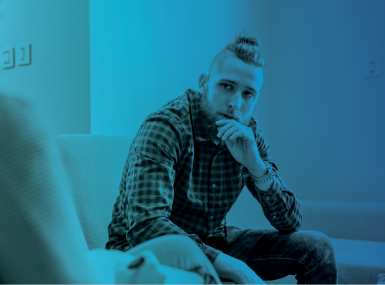Opioid Solutions Strategy Briefs

Upcoming Events
Related News
In 2022, NACo convened an advisory board of national experts and leading researchers to analyze Exhibit E of the national opioid settlement agreements. Exhibit E outlines a non-exhaustive list of over 130 approved uses of opioid settlement funds that qualify as “opioid remediation.” NACo’s Opioid Solutions Strategy Briefs document 15 high-impact opioid abatement strategies from this list that are under county authority. Each brief summarizes the available evidence, best practices for implementation, county examples and links to additional resources, including opportunities for specialized technical assistance.
Jump to Section
In 2022, NACo convened an advisory board of national experts and leading researchers to analyze Exhibit E of the national opioid settlement agreements. Exhibit E outlines a non-exhaustive list of over 130 approved uses of opioid settlement funds that qualify as “opioid remediation.” NACo’s Opioid Solutions Strategy Briefs document 15 high-impact opioid abatement strategies from this list that are under county authority. Each brief summarizes the available evidence, best practices for implementation, county examples and links to additional resources, including opportunities for specialized technical assistance.
Key Strategies
Several strategies are commonly regarded as pillars of response to opioid use disorder. These strategies span the substance use continuum of care – from prevention, to harm reduction, treatment and recovery.
County leaders who are new to the field of substance use or interested in investing in time-tested strategies may find the strategy briefs to the right helpful.

Youth-Focused Prevention: A NACo Opioid Solutions Strategy Brief
Youth-focused programs, including school-based programs, may help support young people and their families, strengthen community connections and mitigate the long-term negative impacts of adverse childhood experiences.

Naloxone to Reverse Opioid Overdose
Naloxone is a “rescue” drug that quickly and safely reverses opioid overdose. It is available as an injectable solution and as a nasal spray. Naloxone works by blocking the effects of opioids in the body. Virtually all opioid overdose deaths are preventable if naloxone is administered in time.

Syringe Services Programs: A NACo Opioid Solutions Strategy Brief
Syringe services programs (SSPs) provide low-barrier access to sterile supplies for safer substance use, naloxone and overdose prevention tools like fentanyl test strips and drug checking services. SSPs also provide a range of other services, such as options for safe syringe disposal, overdose recognition and response training and help accessing services for HIV, substance use disorders and more.

Medication-Assisted Treatment (“MAT”) for Opioid Use Disorder: A NACo Opioid Solutions Strategy Brief
The Food and Drug Administration (FDA) has approved three medications that safely and effectively treat opioid use disorder (OUD) to improve the health and wellbeing of people living with OUD. MAT is defined by on-going, long-term treatment with one of these three medications.
Improving Access Across Systems
Counties oversee a myriad of service systems – from public health to law enforcement, human services and emergency response – that serve communities affected by substance use disorder. From this unique position, county leaders play a pivotal role in fostering collaboration across systems and ensuring that individuals who are engaged in other systems will be aware of and connected with MOUD.
The strategies to the right outline ways by which county leaders can promote a more integrated service system for individuals affected by SUD and make systems change that increases access to care.

Linkage to Care Across County Systems: A NACo Opioid Solutions Strategy Brief
As the owners and operators of systems of service that regularly interface with people affected by substance use such as hospitals, jails, courts and community colleges, counties are well positioned to link community members with evidence-based options for care, especially medications for opioid use disorder (MOUD).

Comprehensive Services for People With Co-Occurring Disorders: A NACo Opioid Solutions Strategy Brief
Comprehensive services integrate multiple forms of substance use, mental health and case management services and may include: evidence-based treatments for SUD, integrated mental health treatment services, housing support, transportation support, employment and educational services, income support, social support, legal services and child care.

Increasing Access to Evidence-Based Treatment: A NACo Opioid Solutions Strategy Brief
Our health care system’s capacity to provide medications for opioid use disorder (MOUD) falls far below the current demand for care. Only 1 in 4 people who need MOUD are able to access them. A multi-pronged approach is needed to build up the treatment workforce, create effective pathways to care and save lives.

Warm Hand-Offs: A NACo Opioid Solutions Strategy Brief
A warm hand-off is a form of referral to treatment or other services. A typical referral gives someone information about how to reach the services they need but may leave them to contact those services on their own. In contrast, a warm hand-off is a transfer of care between service providers through face-to-face, phone or video interaction in the presence of the person being helped.

Post-Overdose Response Teams
Post-overdose response teams (also called quick response teams or post-overdose outreach programs) conduct outreach and offer services to people who have experienced an overdose within about 72 hours of the overdose event.
Improving Access for Specific Communities
Counties often have a strong role in human services and corrections. As a result, county leaders can have a considerable impact on the communities served by these systems – families and people with criminal legal system involvement – by dismantling the specific barriers and meeting their unique needs.
Families
Pregnant and parenting people affected by substance use disorder and infants affected by neonatal abstinence syndrome are at a crucial juncture for treatment. Increasing access to and removing the stigma around medications for opioid use disorder (MOUD) strengthens families and supports recovery.
The strategy briefs to the right address these best practices.

Treatment and Recovery for Pregnant and Parenting People: A NACo Opioid Solutions Strategy Brief
Effective treatment for pregnant and parenting people means expanding access to MOUD and adopting a family-centered approach that prioritizes keeping families together.

Treatment for Neonatal Abstinence Syndrome: A NACo Opioid Solutions Strategy Brief
Neonatal Abstinence Syndrome or NAS (also called Neonatal Opioid Withdrawal Syndrome or NOWS) is a condition that sometimes affects newborns of parents who have taken opioids during pregnancy. Because NAS does not cause long-term health consequences, treatment with MOUD – as opposed to withdrawal and abstinence – is safer for both parents and their infants.
People Impacted by the Criminal Legal System
Incarceration is a primary risk factor for overdose. Within the first two weeks of release, formerly incarcerated individuals are 40 times more likely to experience an overdose than the general population. Increasing access to MOUD in the criminal legal system can save lives, reduce recidivism and promote recovery.
The strategy briefs to the right address these targeted interventions across the criminal legal system – from pre-arrest to release from incarceration.

Pre-Arrest Diversion: A NACo Opioid Solutions Strategy Brief
Pre-arrest diversion strategies enable law enforcement officers to refer community members with unmet needs to trauma-informed case management and support services in lieu of arrest, prosecution and incarceration.

Pretrial Services for People with Opioid Use Disorder
Pretrial services typically consist of assessments and decisions concerning bail, release and community supervision in anticipation of future court appearances. These processes provide important opportunities to engage local health care and social services providers and link defendants and their families to the care that they need.

Effective Treatment for Opioid Use Disorder for Incarcerated Populations: A NACo Opioid Solutions Strategy Brief
Medication-assisted treatment (MAT) is considered the “gold standard” of care for opioid use disorder (OUD). Because incarceration is a known driver of opioid overdose, failure to provide this gold standard of care to incarcerated individuals may exacerbate health risks in your community.

Coordination of Care Upon Release From Incarceration: A NACo Opioid Solutions Strategy Brief
Coordination of care upon release is the deliberate organization and sharing of information between correctional and community-based service providers to ensure the most effective care for each person returning to the community.
Featured Initiative
Opioid Solutions Center
NACo's Opioid Solutions Center empowers local leaders to invest resources in effective treatment, recovery, prevention and harm reduction practices that save lives and address the underlying causes of substance use disorder.











